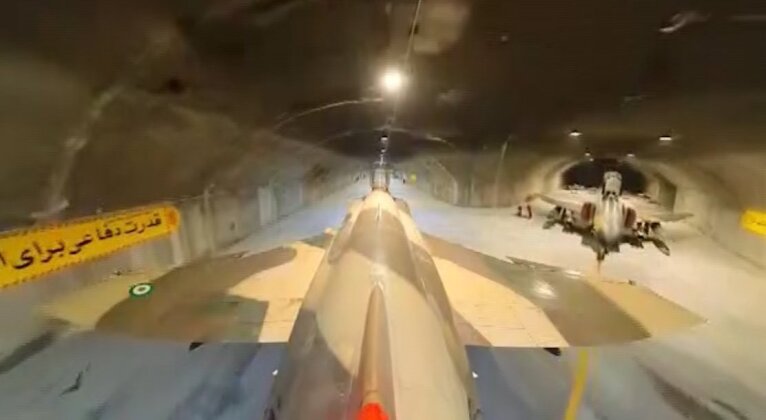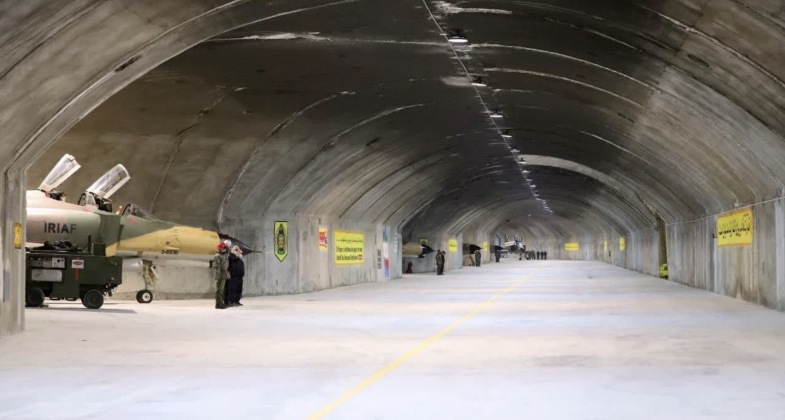News
Did North Korea Build This Underground Airbase For Iran? It Could Seriously Obstruct Western Air Attacks
In early February the first images were publicised of a major Iranian Air Force base hosting F-4D/E Phantom third generation fighter jets, which unlike most bases in the country drew particular attention for its extreme levels of protection and fortification. The facility, named Eagle 44, was built into the side of a mountain, allowing both fighters, their munitions, and a range of drones, to be stored and taxi internally and thus safe from potential enemy strikes. The base is reported to be connected to one or multiple runways, and to house maintenance facilities, crew quarters, command and control facilities and reserves of fuel, spare parts and munitions. The timing of the facility’s unveiling is particularly significant due to the recent drone attacks on Iran, which were reported by U.S. sources to have been carried out by Israel, as well as the escalating exercises by Israeli air units, often alongside American assets, simulating major attacks on Iranian nuclear facilities. Iran’s adversaries have a wide range of means of potentially threatening its airfields, including drone and air strikes, cruise missile attacks from destroyers or submarines, or even ballistic missile attacks. Indeed, Iran’s last major conflict the Iran-Iraq War saw Iraq initiate hostitlies with major strikes on airfields across Iran using assets such as Tu-16 and Tu-22 bombers and Su-22 strike fighters – although poor targeting meant these were overwhelmingly unsuccessful. Fortifying its bases, however, ensures that no conventional weapons short of a very heavy bunker busting penetrative round, such as the U.S. Air Force’s small number of GBU-57 bombs carried exclusively by its tiny fleet of 20 B-2 bombers, can seriously threaten it.

Iran has long fortified major military sites and a number of its nuclear sites underground, as has its leading regional ally the Lebanese militia group Hezbollah for which a massive network of tunnels and underground bunkers was key to its victory in repelling an Israeli invasion attempt in 2006. While Hezbollah’s fortifications have been repeatedly confirmed to have been constructed by North Korean specialists, however, it has been very widely speculated that the same services were provided to Iran leveraging the East Asian state’s decades long expertise in the field. North Korea not only operates multiple underground airfields, but has exported this knowhow abroad including to China during the Cold War. When offered to Vietnam in the 1960s these bases could each accommodate 32 MiG-21 fighter jets. Korean expertise in this field began to be built up in the Korean War, with underground fortifications being both well suited to the country’s mountainous terrain, and vital due to massive and intensive Western air attacks on both military targets and civilian concentrations across the country. North Korea is today considered the most tunnelled country in the world as a result, with a prominent example being the Pyongyang Metro, the world’s deepest underground rail line which was designed specifically to provide survivability against potential American nuclear strikes and thus double as a shelter for civilians.

North Korea has been a leading provider of military knowhow and equipment to Iran since the early 1980s, ranging from the country’s first licence produced ballistic missiles to data from Korean nuclear tests. The probability is high that North Korean specialists had a leading role in the construction of Eagle 44, and potentially of other facilities like it elsewhere in Iran. Iran’s less mountainous terrain, however, means there are less optimal locations for underground bases than there are in North Korea itself. Despite the formidable nature of the fortifications seen at Eagle 44, the base’s ability to play a major role in the country’s defence is undermined by the age of the F-4D/E Phantom fighter – the very same aircraft North Korea was offering underground bases to Vietnam to in order to defend against. These 1960s fighter jets, although modernised domestically, are overwhelmingly outmatched by fifth generation and enhanced fourth generation fighters in the U.S. Air Force which have far more capable sensors and weaponry and would spearhead any potential offensive into Iranian airspace.

Iran is expected to rely primarily on ground based air defences rather than on aircraft to counter possible incursions, with the existence of a large fighter fleet despite its obsolescence still increasing the strain any potential enemy force would face. The ability to ensure fighter units can remain operational, and canot be taken out in early missile strikes on their bases, is thus valuable. Iran notably operates three early fourth generation fighter classes, the F-14, Su-24M and MiG-29A/UB, with the latter two potentially being accommodated in bases such as Eagle 44. Whether any of its underground facilities can accommodate the larger F-14, or the new Su-35 fighters recently ordered from Russia, remains less clear, as does what fighter class will replace the F-4D/E over the next decade as the class is expected to be phased out. The Chinese J-10C, however, is considered a leading candidate, and is approximately half a century ahead in terms of sophistication while requiring much less maintenance and also being smaller – and thus easy to accommodate in bases currently housing F-4s.












